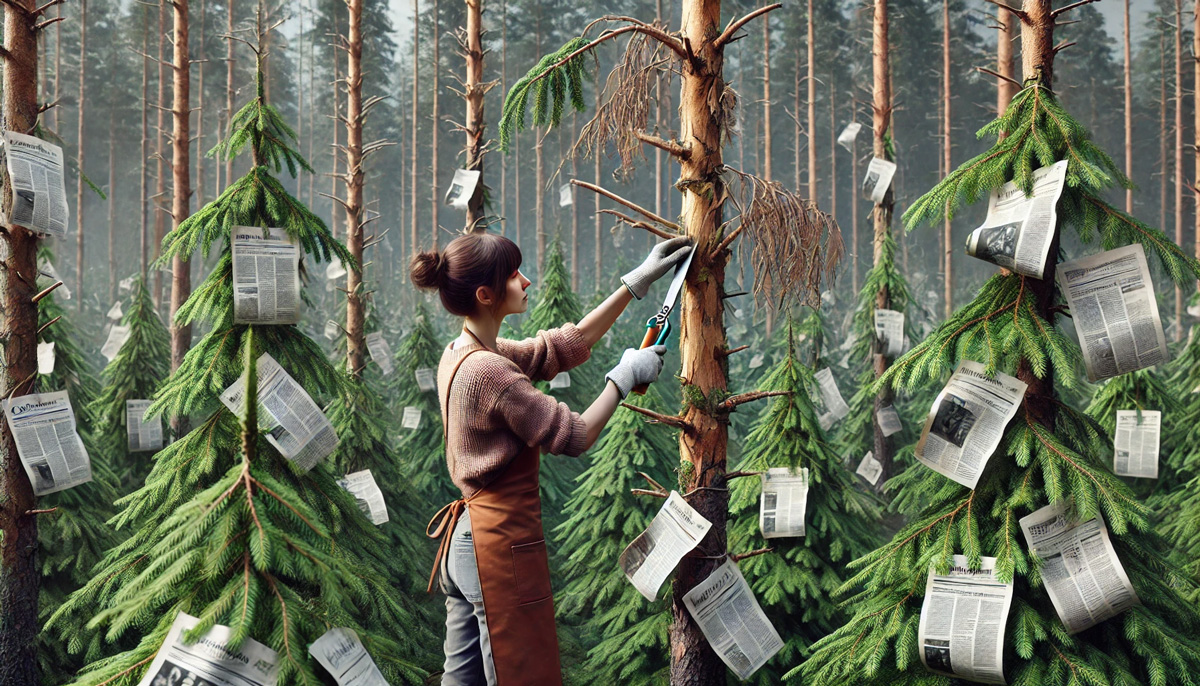Your “Evergreen Content” Desperately Needs Routine Watering, Fertilization, and Pruning
You have likely heard the phrase “evergreen content” used by digital marketers or discovered how-to guides on creating evergreen content as you were researching and developing your own content strategy. Evergreen content is commonly defined as content that remains relevant for readers with minimal to no updates. Some experts argue that evergreen content lasts forever, while others put a more conservative shelf life of “several years.”

However, in our experience, just like evergreen trees, evergreen content still needs regular attention to thrive and grow.
Table of Contents
All Content Becomes Outdated Eventually
If a marketing or SEO specialist tells you that they produce evergreen content that will always be relevant and deliver traffic to your website in perpetuity, it may be time to find a new gardener. By that definition of evergreen content, I argue that evergreen is not a thing.
Types of “Evergreen Content”
From our experience authoring and editing thousands of blogs, website content, and other marketing materials for over a decade, every piece of content becomes outdated over time. Let’s look at some of the most common types of content that marketers and SEO’s claim as “evergreen.”
Note that this is NOT a list of content that, we at Igniting Business, deem as evergreen. These are “types of evergreen content” that we identified in multiple other third-party articles and resources from trusted marketing and SEO experts and generative AI assistance.
How-to Guides and Tutorials
While extremely useful to your visitors, the specific steps, and associated screenshots, in how-to guides and tutorials will inevitably become inaccurate as systems and processes change. As such, if your how-to guides are left alone, their value will drastically decrease as steps become confusing at best or completely unhelpful at worst.
Listicles/Resources Lists
It is common for companies to curate listicles of the best industry-specific tools or resources in hopes of providing value to visitors. However, those tools and resources may degrade in quality, stop existing overtime, or become inaccessible. All of which require a revamp of the listed resources.
Interviews and Case Studies
Interviews and case studies may be fantastic for showing the relevance of your products or services to your visitors and persuading them with social proof. However, overtime your own product and service offerings change, which may eventually make those case studies and interviews no longer relevant.
Infographics
So many marketing companies push infographics, especially because they can quickly garner so much attention with such an engaging visual format. However, infographics are typically extremely data/statistic heavy. As such, as soon as those data/stats are even a couple of years old, they lose their value. This requires the infographic to be re-worked with new, updated data.
Product Reviews and Comparisons
Product reviews can age well if the product truly does not change. For example, if you write an article reviewing the best ergonomic vertical mouse for long hours, arguably that specific product might not change. However, eventually that product may be replaced by a new model (and the old model is no longer available for sale). Or the maker could have released a software patch that fixed a major bug you were experiencing during testing.
Industry-specific Templates and Calculators
I have heard some argue that templates and calculators are evergreen, but I don’t see how this is the case. Templates are only helpful if they work with the latest versions of their associated programs and handle all variables with accuracy, which requires constant testing and updating. Similarly, in order to be useful, calculators must have the most up-to-date variables and formulas to stay accurate and useful.
Best Practices
I’m appalled that “best practices” articles were on multiple articles I read classified as evergreen content. Once upon a time, using meta keywords was a “best practice” for SEO. Google hasn’t used the meta keywords field for over a decade. If your best practices article isn’t routinely updated, then your best practices are more likely to become the best time-wasting practices.
Evergreen Content Still Needs Your Attention
Evergreen trees may be green all year long, but that does not mean they do not need a little help to thrive. The same is true of your beloved content.

Water and Fertilize Your Content
Similar to evergreen trees, evergreen content needs regular water and occasional “fertilization” through additional content updates, search intent refinements, and multimedia enhancements (e.g. adding new images or videos). This ensures that the content remains engaging and aligned with your readers’ needs.
Protect Your Content Against Pests and Disease
Evergreen content can be “attacked” by changes in search engine algorithms or new competing content that outranks it. Regular SEO and analytics audits, re-optimization, and addressing outdated information are akin to “treating” your content to protect it from losing visibility or credibility.
Adapt to Seasonal Changes
While evergreen trees maintain their foliage year-round, the trees themselves change regarding metabolic and photosynthesis processes, needle/leaf adaptations, and pigmentation. Likewise, your content must adapt to shifts in the industry, search intent, and emerging trends. Seasonal updates, such as addressing new market conditions or technological changes, help keep the content relevant.
Proper Placement and Environment
An evergreen tree lacking the proper sunlight and soil composition will be less likely to thrive. Similarly, placing content in the right “environment” means aligning it with the correct audience, safeguarding its technical structure, and ensuring it is shared and promoted through the multiple channels (e.g. SEO, email marketing partners, social media, etc.). Even evergreen content can fail if it is not positioned and promoted effectively.
Prune Your Content
Just like a tree, evergreen content benefits from regular updates and “pruning.” This could mean revising information to keep it accurate, removing entire outdated sections, or eliminating (and redirecting) certain dying articles altogether for the sake of merging them into other useful resources.

Monitor Your Content for Long-Term Growth
Just like evergreen trees, evergreen content needs ongoing monitoring of its performance, such as tracking metrics like traffic, engagement, conversions, and rankings. This helps identify when the content might need intervention or enhancement.
Google Is Clearly Rewarding Freshness
We’ve seen through multiple “Helpful Content Updates” by Google and even the recent Google API documentation leak, that Google is clearly tracking and rewarding content that is “fresh.” Note that while published dates are tracked, you cannot simply make a sentence tweak or two and update the publish date to fool Google.
Google is blatantly rewarding content that is routinely updated, especially if the search query is deemed as one that “requires freshness.”
Nurture Your Evergreen Content
While evergreen trees are admired for their year-round foliage and resilience, they still require care and attention to remain healthy and vibrant. This mirrors the reality of evergreen content, which, despite its label, needs ongoing “nurturing” to maintain its value and impact over time.
Do not fall into the trap of simply creating new content constantly. Make sure your existing content gets the regular attention that it needs to survive and thrive.
To get more tips about revamping existing content, content marketing, and other SEO topics, consider subscribing to our free monthly newsletter.
About the author
Ben Seidel is the CEO and Founder of Igniting Business. Ben has been serving hundreds of small businesses with web design and SEO services for over 15 years and covering digital marketing related topics since 2012.
Over the years, Ben has been recognized on a local and national level, including entrepreneurship awards from both the NFIB and NASE and being featured in publications such as CNBC Universal, Yahoo News, Intuit Small Business, CIO.com, Mizzou Magazine, and Fox Business.